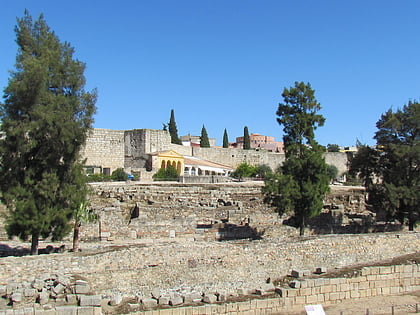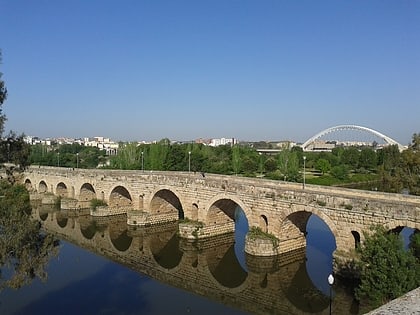Esparragalejo Dam
#831 among destinations in Spain


Facts and practical information
The Esparragalejo Dam was a Roman multiple arch buttress dam at Esparragalejo, Badajoz province, Extremadura, Spain. Dating to the 1st century AD, it is the earliest known multiple arch dam. ()
ExtremaduraSpain
Esparragalejo Dam – popular in the area (distance from the attraction)
Nearby attractions include: Museo Nacional de Arte Romano, Roman Theatre, Roman amphitheater, Alcazaba de Mérida.
 History museum, Museum
History museum, MuseumMuseo Nacional de Arte Romano, Mérida
147 min walk • The Museo Nacional de Arte Romano stands as a testament to the rich Roman heritage of Mérida, Spain. Established to preserve and exhibit the archaeological remains of the ancient city of Augusta Emerita, this museum has become a cornerstone attraction for history...

5.8 miSE Ruins of Roman amphitheaterRoman Theatre, Mérida
149 min walk • The Roman Theatre in Mérida, Spain, is an ancient architectural marvel that transports visitors back to the grandeur of the Roman Empire. This well-preserved theatre, constructed during the reign of Emperor Augustus around 15-16 BC, stands as a testament to the...

5.9 miE , Historical place, AmphitheatreRoman amphitheater, Mérida
150 min walk • The Roman amphitheater in Mérida, Spain, is a magnificent testament to the grandeur of ancient Roman architecture and entertainment. Built during the reign of Emperor Augustus in the 8th century BC, this historical landmark is a part of the Archaeological Ensemble of...
 Historical place
Historical placeAlcazaba de Mérida, Mérida
140 min walk • The Alcazaba de Mérida is a formidable historical landmark nestled in the heart of Mérida, Spain. This ancient fortress, dating back to the 9th century, stands as a testament to the city's rich past, offering visitors a glimpse into the era of Moorish rule in the...

 Bridge
BridgePuente Romano, Mérida
134 min walk • The Puente Romano is a Roman bridge over the Guadiana River at Mérida in southwest Spain. It is the world's longest surviving bridge from ancient times, having once featured an estimated overall length of 755 m with 62 spans. Today, there are 60 spans on a length of 721 m between the abutments.

5.1 miE Roman-era aqueduct in a park settingAcueducto de los Milagros, Mérida
131 min walk • The Acueducto de los Milagros is the ruins of a Roman aqueduct bridge, part of the aqueduct built to supply water to the Roman colony of Emerita Augusta, today Mérida, Spain.

5.9 miE Ruins, , AqueductSan Lázaro Roman aqueduct, Mérida
150 min walk • The San Lázaro Roman aqueduct is a Roman aqueduct located in Mérida, Spain. It was declared Bien de Interés Cultural in 1912.
 Church, Romanesque architecture, Gothic architecture
Church, Romanesque architecture, Gothic architectureCo-Cathedral of Saint Mary Major, Mérida
138 min walk • The Metropolitan co-cathedral of Saint Mary Major of Mérida is a Roman Catholic cathedral church in Mérida, Extremadura, western Spain. Since 1994, together with the Metropolitan Cathedral of Saint John the Baptist of Badajoz, it is the seat of the Archdiocese of Mérida-Badajoz.

5.6 miSE Historical place,Roman Forum, Mérida
143 min walk • The Roman Forum is an archaeological area in Mérida, Spain. It was the main public area of the Roman city of Emerita Augusta, founded in 25 BC by Emperor Augustus. The city had another forum, the Provincial Forum, built in 50 AD.
 Monuments and statues
Monuments and statuesEquestrian statue of Augustus, Mérida
128 min walk • The equestrian statue of Augustus is a bronze statue of Augustus, the first Roman emperor, riding a horse. It dates from 2007 and is in Mérida, Spain, located on a roundabout at the intersection of the Avenida de Portugal and the Avenida Reina Sofía.
